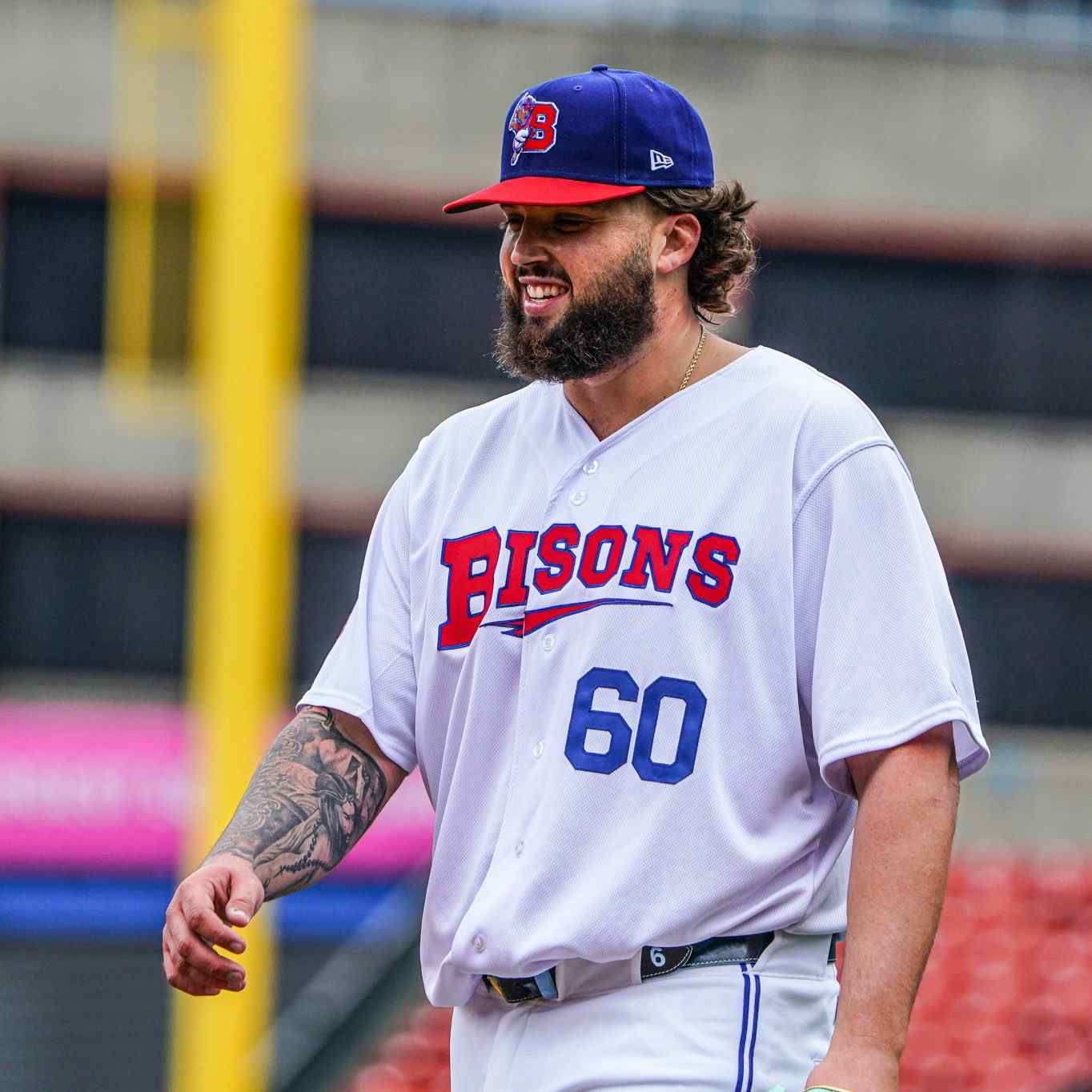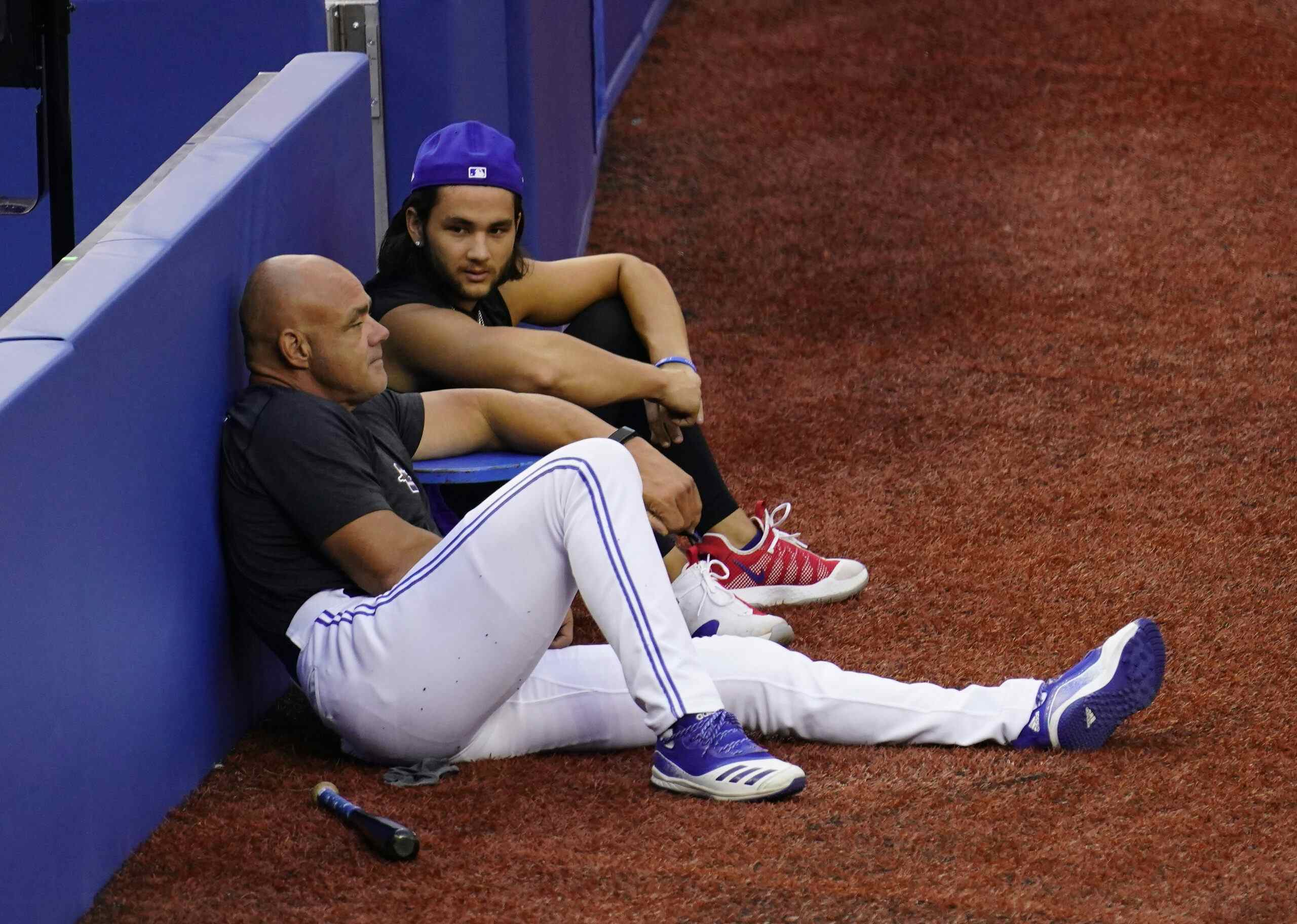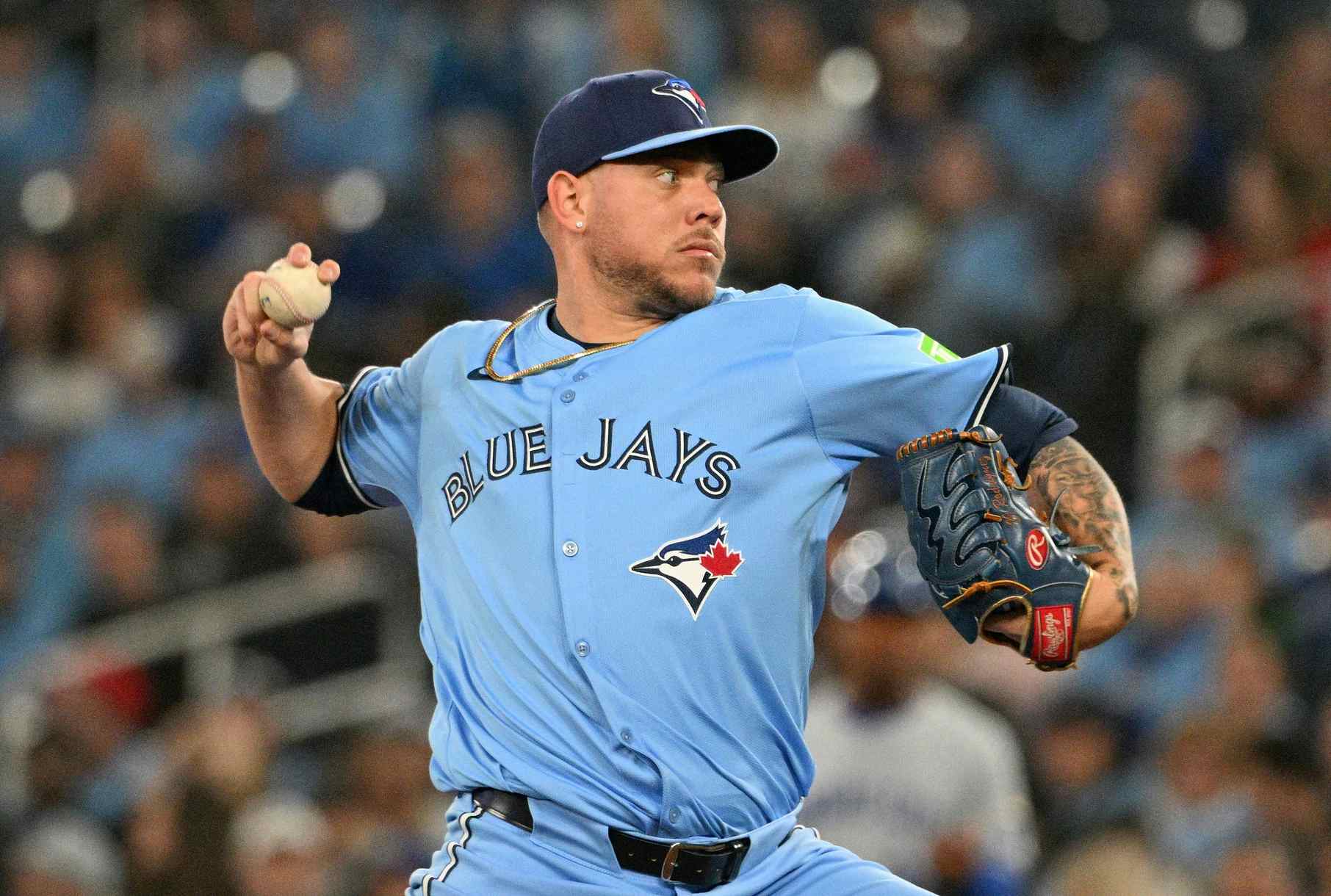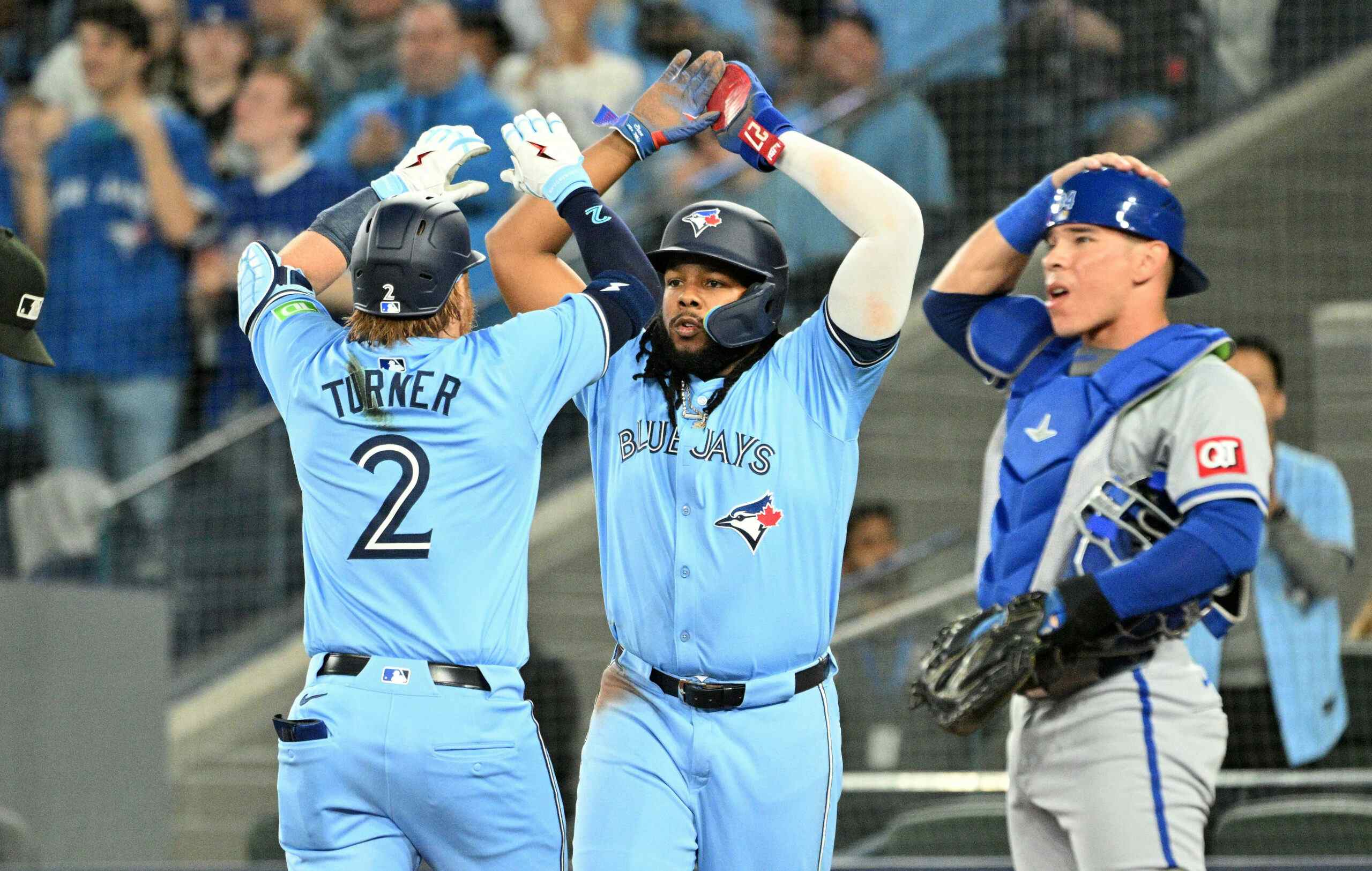Cautionary Tales Should Be Front Of Mind As The Blue Jays Consider How To Handle A Talented And Confident Aaron Sanchez
By John Lott
8 years ago
Aaron Sanchez – Photo Credit: John Lott
Among the tenants of the Blue Jays’ inner sanctum, the debate is spirited. There are two distinct camps, each presenting respectful but robust reasoning. The evidence continues to trickle in. No one is in a particular rush to settle this case.
No one, perhaps, except for Aaron Sanchez.
The Jays have one vacancy in their starting rotation. Sanchez aches for it, dreams about it, grows angry in moments when he fears he won’t get it, then gives his head a shake and says this team has a chance to win big this year, so yes, if they need me in the bullpen again, I won’t complain.
But geez, let me start already.
Without hinting at their personal positions in this debate, his coaches say that he has worked his butt off to earn a rotation spot. Physically and mentally, they say, he is unquestionably a better – and stronger – pitcher than he was a year ago. His spring performance, for what it’s worth, certainly reinforces that position.
Should the Jays declare Sanchez a starter and trust that he can fulfill the elite potential they saw when they made him a top draft pick in 2010? Can he hold up for 30 starts, or will he flag at 150 innings, or get hurt? Or should they keep him in the bullpen, where they’d have a sure thing – a lockdown setup man whose presence might enable the Toronto bullpen to match up with the newly enriched Yankees and Red Sox?
It says here that Sanchez should start.
***
First off, let me acknowledge that my opinion has no more validity than yours, particularly if you have studied this question, perhaps more carefully than I, and reached your own conclusion. But I started this process with a thesis and tested it through research and by talking to some Jays people whose opinions I respect.
My thesis was that Sanchez should start. I looked for arguments to back me down from that self-righteous plateau. I vacillated a time or two, but wound up where I started.
For the few Blue Jays fans who cannot recite the Sanchez back story by rote, here you go. Coming off a season in which he began as a starter, got hurt and finished as a dynamite reliever, he worked out like a fiend with Marcus Stroman’s crack team of conditioning gurus at Duke and gained 20 pounds of muscle. Sanchez was one obsessed 23-year-old coming into spring training.
And at one point in February he turned a tad chippy when media types kept asking him about his bid for the fifth starter’s job – in part because these were the same old questions he’d had to field a year ago.
“This isn’t the first year that the questions have been about starter-bullpen,” he told me during a quiet chat following his March 18 start in Dunedin. “I get hounded by the media. Last year I had to deal with it too. And then I did both [starting and relieving] last year, and this year, I heard so much for two weeks, it was just, ‘Let me do my thing on the field and then you distinguish what’s going on. I was like, Stop pounding me with questions.’ ”
I tried not to pound, but I had questions. For instance: How are you different as a pitcher compared to last spring?
“Coming into spring training,” he said, “you think you’re ready – until you get to the season. Last year being my first year in The Show, I didn’t really know what to expect. But now that I’ve been there, for 162 games and the playoffs, I understand what it takes to go across that eight-month grind.
“From where I was at last year compared to now, it’s a whole 180. I know what it takes to go out there and get the job done, while before your mindset’s a little bit like, ‘Do I belong here?’ Now that I’ve been here for a year and I understand what type of stuff I got, I’m ready to go. I came into spring training knowing what I needed to do, knowing what I had to do, and I think it’s showing.”
What’s showing, through four spring outings, is three runs allowed in 13.2 innings, with 15 strikeouts and three walks. He pushed his pitch count to 70 in his last start. His curveball and changeup, pitches he rarely used as a reliever, have ranged from good to well above average at times. (He achieved his goal of a sub-90 changeup in his last start and was pretty pumped about that.) His cutter remains a work in progress. Sure, we all know about spring-training fool’s gold, but that’s not a bad summation for someone who hadn’t started a game since last June 5.
Pitching coach Pete Walker: “I certainly see a stronger individual, a more consistent delivery. I see an extremely confident pitcher, one who believes he’s capable of getting major-league hitters out for more than one inning. He was confident last year, but it was different then. Even though he’d had success in the bullpen, there’s still a period of transition that you go through in the big leagues. But we saw him grow last year. This year he’s starting off with that feeling, where last year he was kind of growing into it.”
***

Aaron Sanchez – Photo Credit: John Lott
Joe Sheehan – the Sports Illustrated baseball writer, not the Jays’ analytics expert – wrote about Sanchez in his March 9 email newsletter, citing the perils of waiting too long to covert a reliever into a starter. He also warned about bouncing a young pitcher back and forth between roles.
Sheehan wrote: “When you put a young starting pitcher in the bullpen, you’re giving him a completely different job than he’s been working towards, one that doesn’t train him at all for starting … I hope it works out for Sanchez, but I can look around the league and see Alexi Ogando and Joba Chamberlain and Robbie Ross and Neftali Feliz and know that it probably won’t.”
At the end of this piece, I have appended summaries of what happened when their teams mishandled those four pitchers. I added Daniel Bard to the list too.
Those pitchers became cautionary tales because they were bounced between roles or their teams waited too long to move them from the bullpen to the rotation. Given those precedents, I’d say it’s time for Sanchez to start. He was once projected as a premier starter. He still could be. He believes he could become one of the game’s very best in that role, and there are folks around him who agree.
The spring narrative cites Sanchez as a fifth-starter candidate. In fact, given the chance, he could become their No. 2 starter, maybe even No. 1. He has that kind of stuff.
But the longer he stays in the bullpen, the less likely that will happen. Even new GM Ross Atkins acknowledged that during an off-season media chat.
I asked Pete Walker whether the club’s internal discussions have addressed how long to wait before making Sanchez a starter.
“That’s been debated and discussed,” Walker said. “There’s certainly different opinions on that. There’s great discussion, but ultimately it’ll be a cumulative decision based on what’s best. But that’s certainly something that has been discussed.”
***

Physical therapist Nikki Huffman, who helped supervise Aaron Sanchez’s winter workouts, chats with pitcher Bo Schultz in spring training. In the middle is Angus Mugford, who heads the Jays’ new high-performance department – Photo Credit: John Lott
Another topic of those discussions: can Sanchez hold up as a starter? Since he was drafted, scouts and bloggers have reveled in dissecting his mechanics. The cynics among them diagnosed him as an accident waiting to happen. When he went down last June, there were lots of I-told-you-sos.
Sanchez says he got hurt because he simply wasn’t big and strong enough in the right places. Soon after the injury, he and his buddy Stroman concluded it would be a good idea to talk to Stroman’s team at Duke University, where Stroman was rehabbing after knee surgery. After the season, they both went back to Duke for meticulously structured workouts.
Sanchez stands 6-4 and last year barely weighed 200 pounds. Not only did the Duke team work on building muscle, but they badgered him to eat more. He heard that a lot from physical therapist Nikki Huffman, who recently joined the Jays’ new high-performance department.
Recalled Sanchez: “She said, ‘If you’re not eating, then I’m not working out with you.’ I told her, ‘I didn’t come all the way out here to not work out.’ ”
The extra weight and muscle helped to create a less stressful delivery. Sanchez said the difference is “tremendous.”
“I know a lot of people may say 20 pounds might not be anything, but my delivery just comes so seamlessly now,” he says. “Before I was thinking too much out there, worried about whether I’m in the right position. This year it comes so much more natural. When I’m out there, it’s about executing pitches, it’s not, ‘Hey, am I in the right spot in my delivery to execute those pitches?’ I’ve done everything right to this point.”
Walker insists there are no worries in the Jays’ camp about Sanchez’s mechanics. Bullpen coach Dane Johnson says Sanchez, like most young pitchers (especially tall types), tended to rush his delivery, causing arm drag and disrupting balance and timing. Sanchez has learned to adjust when things go a little wacky, to recognize the keys that make his delivery sound, Johnson says.
“Aaron Sanchez got better at it and he continues to get better at it,” Johnson says. “I know he’s still a young kid, but there’s spit and polish every time he goes out there now. He puts that on him by himself. He knows where he needs to be.
“Guys that long and lanky often find it hard to find and keep their release points. Usually it takes longer for those guys. But as you can see, and even the fans can see, it’s starting to come together in a major-league way for Aaron.”
***

Aaron Sanchez – Photo Credit: John Lott
Everybody with a role in the Sanchez decision says it will come down to what’s best for the team. President Mark Shapiro says objective data will form part of that rationale, but let’s face it, given the complex dynamics at play here, determining what’s best for the team is ultimately subjective.
Shapiro, however, says he tries to make it as objective as possible, in part by consulting a score of staffers. Faced with these kinds of decisions, he and Atkins solicit opinions by email, which, he says, helps keeps emotion to a minimum, makes staff feel their views are valued and gives those atop the hierarchy the best input possible.
“Some of the best ideas come from some of the most junior people,” Shapiro says. “So want to make sure we foster the creativity, we foster the inclusiveness of our culture. And so we send out a questionnaire to 20 people and get all of their feedback – all the staff, all the uniformed staff, all the people that work in our baseball operations department, some of our key scouts. We’ll factor all of that information in, we’ll frame the decision and then we’ll get a much smaller group of people in the room to kind of make the decision in the end.”
The “win-now” narrative is strong, and some believe that’s best served by teaming Sanchez with Roberto Osuna, Drew Storen and Brett Cecil in the bullpen. Gavin Floyd has been a pleasant surprise as a spring starter. Jesse Chavez is an adequate swing man. Why not start Floyd and leave well enough alone in the bullpen?
But another view in the room says that with three solid back-end relievers already in place, why not let Floyd and Chavez help fill that middle-innings gap?
After all of the foregoing, that’s where I stand, for what it’s worth. Sanchez could be a rotation cornerstone for years to come. Waiting another year could turn him into another Neftali Feliz.
I asked Sanchez if he knew about the sagas of Feliz and Joba and the others. He did not speak. But he nodded.
THE CAUTIONARY TALES
Joba Chamberlain
Oh, the hype, and for good reason. Chamberlain reached the majors at 21 in 2007, his first pro season, and blew everyone away with a 97-mph fastball and exemplary command out of the bullpen. In May of his second season, the Yankees made him a starter. In August he hurt his shoulder. In 2009 he was back in then rotation. His strikeout rate dropped, his walk rate increased and his ERA jumped more than two runs to 4.75. After that he became a full-time and decidedly sub-mediocre reliever (when he wasn’t hurt). This spring he’s seeking a job with his fourth team in a year. He’s 30.
Neftali Feliz
Mainly a starter in the minors, Feliz broke in with Texas in 2009 at age 21 and quickly became one of the game’s most successful relievers. He became the Rangers’ closer the next year and posted a 2.73 ERA, 3.25 FIP and 72 saves over two seasons. Then, having signed Joe Nathan, they made Feliz a starter in 2012. He held up for a little more than a month, needed Tommy John surgery, got hurt again in 2014, signed with Detroit in the middle of 2015, logged a 6.38 ERA and got hurt again. At age 28, he’s trying to catch on with the Pirates this spring.
Alexi Ogando
Like Feliz, Ogando was a product of Nolan Ryan’s “no-coddling-pitchers” philosophy. The difference was that Ogando had been a reliever in the minors and became a very good one as a Rangers rookie in 2010 (1.30 ERA, 3.06 FIP). So Texas figured it made perfect sense to convert him to a starter in 2011. He did well at first, struggled in the second half, went back to the bullpen in 2012, started again in 2013 but hit the DL three times, went back to relieving in 2014 and got hurt again. Ogando was mediocre with Boston last year and is with the Braves this spring. He’s 32.
Robbie Ross
Another Ranger (do you notice a trend here?) and another who started – for three years – in the minors before coming up in 2012 as a reliever at age 23. Over his first two seasons, his ERA was 2.62, his FIP 3.29. In his third year, he Texas made him a starter and turned him into a yo-yo: nine starts, then nine relief outings, then four more starts, then four cameos in relief. The result: 6.20 ERA, 4.74 FIP. Ross escaped to Boston last year and was OK, but nothing like the reliable reliever of his first two years. Back with the Red Sox this spring, he’s still only 26.
Daniel Bard
In his first three years (ages 24-26), Bard’s work ranged from solid to sensational. He logged a 1.93 ERA and a left-on-base percentage of 86 in his second year. Then Boston made him a starter in 2012. Over his first 55 innings, he walked 37 (vs. 34 strikeouts) and hit eight batters before lugging a 5.24 ERA back to Triple-A. Since then, injuries and control problems have dogged him. (Last year he fell all the way to Class A ball, where in four games he gave up 13 runs – on no hits – in two-thirds of an inning). So far this spring, he’s pitching well in relief for Pittsburgh. He’s 30.
Recent articles from John Lott





